
A handout picture released on September 23, 2020 by Andrew Bladon of University of Cambridge shows a Mountain ringlet Erebia epiphron butterfly on a net on July 10, 2018. Key to butterfly climate survival may be in the wings. Whether a butterfly's wings absorb or reflect heat from the sun could be a matter of life and death in a warming world, according to British research published on September 24, 2020 calling for gardens, parks and farms to host shady, cooling-off spots. While all butterflies are ectotherms – they cannot generate their own body heat -- their ability to thermoregulate varies significantly between species, researchers said. The study shows that larger and paler butterflies including the Large White (Pieris brassicae) and Brimstone (Gonepteryx rhamni) are best able to buffer themselves against environmental temperature swings. They angle their large, reflective wings in relation to the sun, and use them to direct the sun’s heat either away from, or onto their bodies. These species have either stable or growing populations. (Photo by Andrew Bladon/University of Cambridge/AFP Photo)
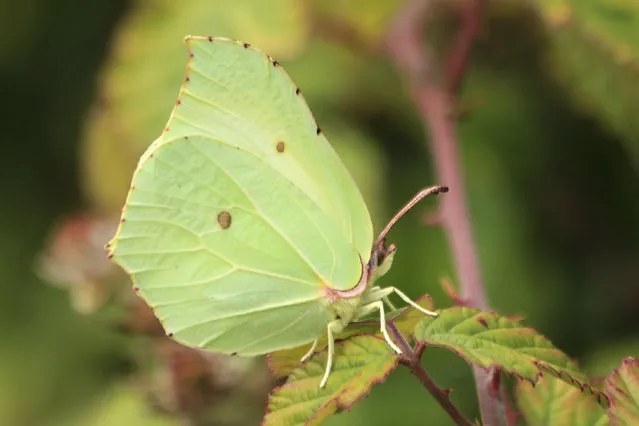
A handout picture released on September 23, 2020 by Andrew Bladon of University of Cambridge shows a Brimstone Gonepteryx rhamni butterfly on July 29, 2020. Key to butterfly climate survival may be in the wings. Whether a butterfly's wings absorb or reflect heat from the sun could be a matter of life and death in a warming world, according to British research published on September 24, 2020 calling for gardens, parks and farms to host shady, cooling-off spots. While all butterflies are ectotherms – they cannot generate their own body heat – their ability to thermoregulate varies significantly between species, researchers said. The study found that those that struggle to moderate their body temperatures often rely on being able to escape the full heat of the sun in shady “microclimates” to survive. (Photo by Andrew BLADON/University of Cambridge/AFP Photo)
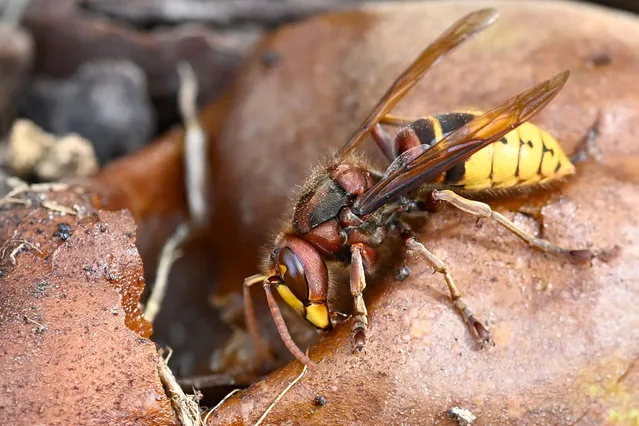
A European hornet (Vespa crabro) eats a rotten pear near Rennes, western France, on September 12, 2020. (Photo by Damien Meyer/AFP Photo)
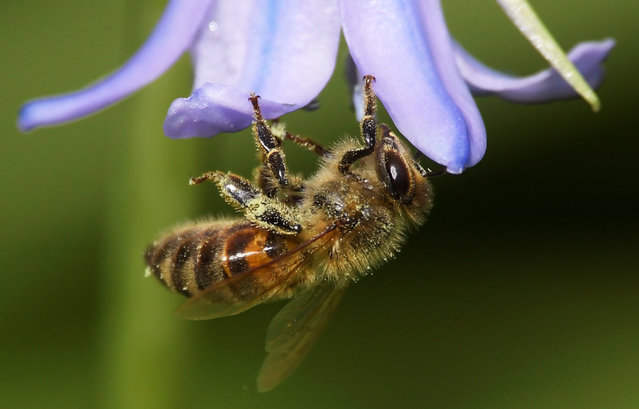
A bee covered with pollen hooks itself onto a petal of a bluebell in a garden, as the spread of the coronavirus disease (COVID-19) continues, in West London, Britain, April 23, 2020. (Photo by Toby Melville/Reuters)
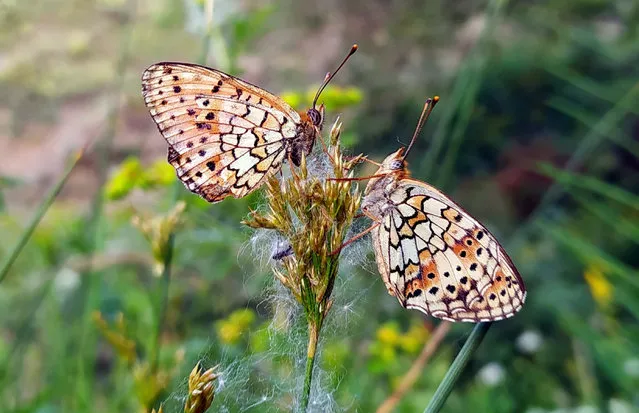
A close up photo shows butterflies at Lake Van basin in Bitlis, Turkey on July 28, 2020. (Photo by Ahmet Okur/Anadolu Agency via Getty Images)
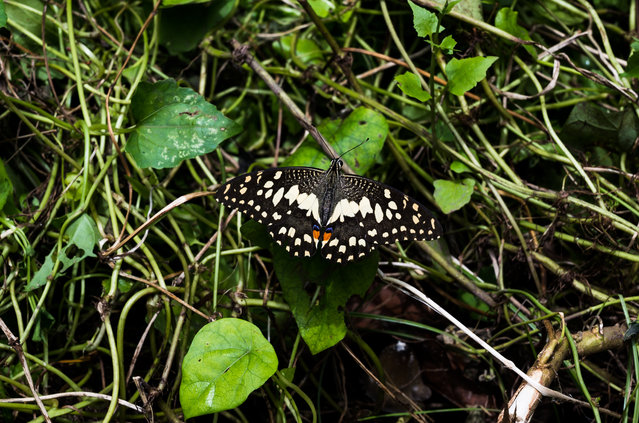
A lime butterfly camouflage in grass in Tehatta, Nadia, West Bengal, India on 15 July 2020. (Photo by Soumyabrata Roy/NurPhoto via Getty Images)
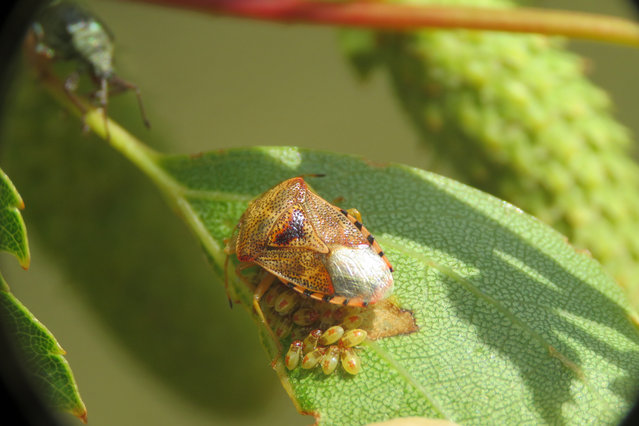
A female parent bug (Elasmucha grisea) protects her babies from an approaching threat, a mirid bug. Very few insects offer any parental care, usually just laying eggs on the appropriate food plant or other food source. The common earwig (Forficula auricularia) is one of the few other species that cares for their young. (Photo by Rupert Higgins/The Guardian)
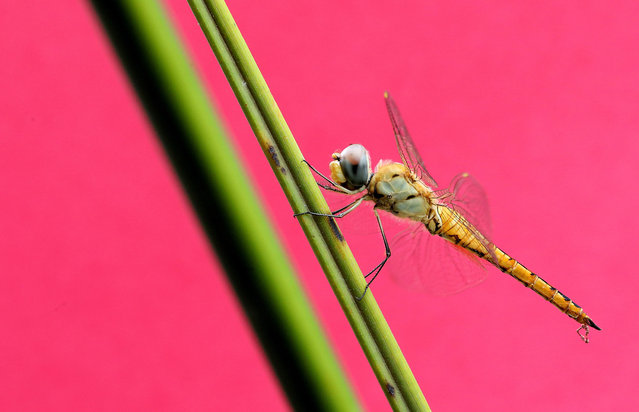
Ditch Jewel dragonfly (Brachythemis contaminata) seen on the outskirts of New Delhi, India, 06 September 2020. Brachythemis contaminata, ditch jewel, is a species of dragonfly and can be spotted in many Asian countries. (Photo by Harish Tyagi/EPA/EFE)
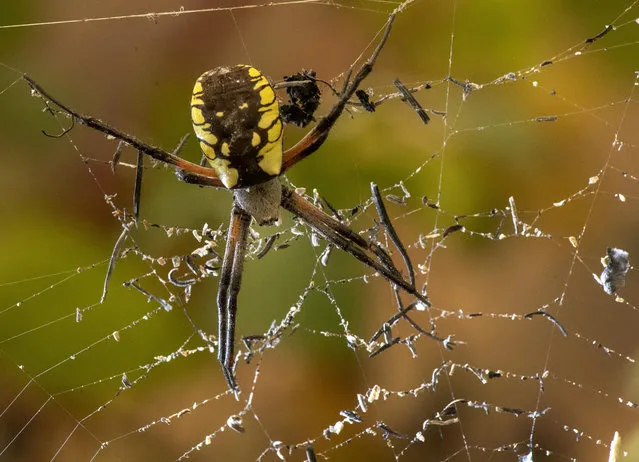
Ash from nearby wildfires clings to the threads of a spider web in a blackberry thicket along a road near Elkton in western Oregon on September 10, 2020. Ash has been raining down in the area for the last few days as numerous large wildfires burn out of control in the area and across the western United States. (Photo by Robin Loznak/ZUMA Wire/Rex Features/Shutterstock)
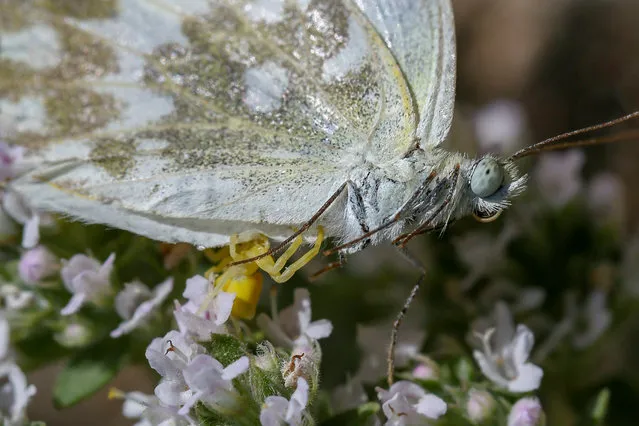
A yellow crab spider catches a butterfly sitting on flowers in Van, Turkey on June 22, 2020. (Photo by Ozkan Bilgin/Anadolu Agency via Getty Images)
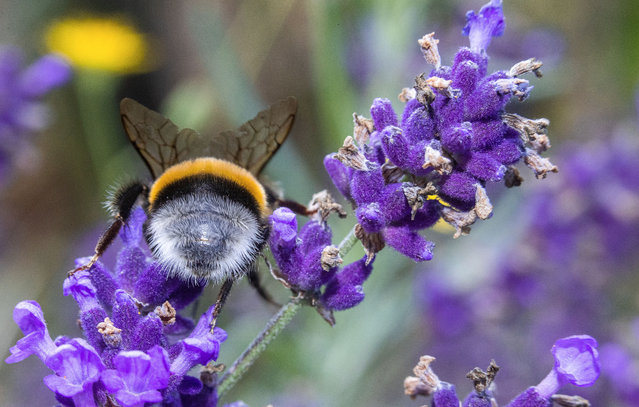
A bumblebee collects pollen on a lavender plant in Pokrent, Germany on July 23, 2020. The hymenoptera (a group comprising bees, wasps and sawflies) has an average life expectancy of 28 days. (Photo by Jens Büttner/dpa-Zentralbild/dpa)
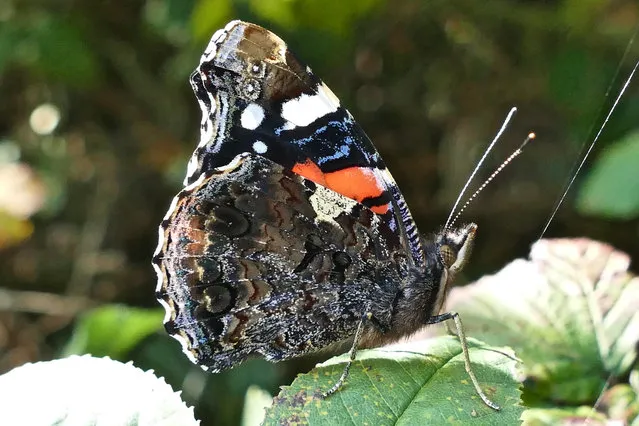
A peacock butterfly closes its wings on a sunny day in Hengistbury Head, Dorset on September 14, 2020. (Photo by Geoffrey Swaine/Rex Features/Shutterstock)
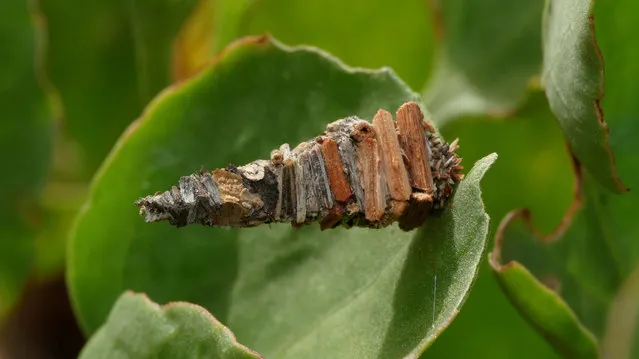
An undated handout photo made available by the Zerynthia Association shows the pupa of an amicta moneiba, a recently discovered species of moth endemic to La Gomera and El Hierro islands in the Canary Islands, Spain (issued 01 July 2020), as those two islands pulled apart from the rest of the Canary Islands 2.5 million years ago. The Institute of Evolutionary Biology of the Spanish National Research Council (CSIC) and the Zerynthia Association have recently discovered two new moth species in El Hierro and La Gomera. (Photo by Yeray Monasterio/Zerynthia/EPA/EFE)
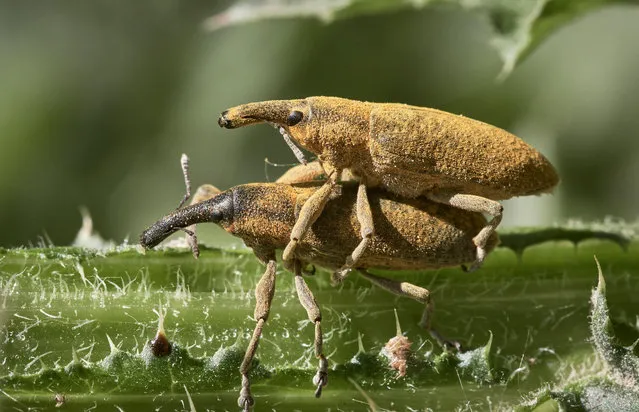
Two long snout weevil beetles mating covered with yellow pollen powder, in Waghäusel, Germany. (Photo by Thomas Marx/Alamy Stock Photo)
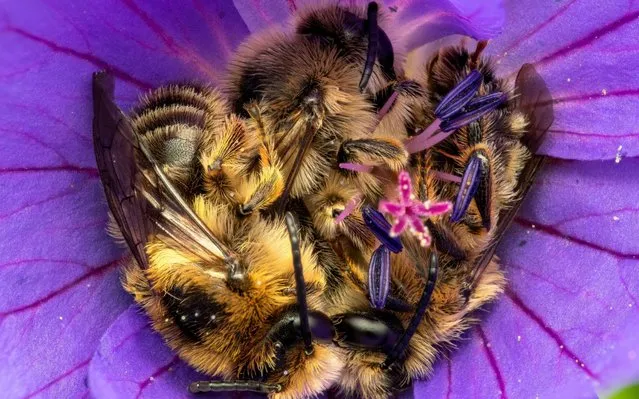
This amazing series of close up photographs show a family of bees fast asleep inside vibrantly coloured flowers in England on August, 2020. (Photo by MatthewThomas/BNPS)
11 Oct 2020 00:01:00,
post received
0 comments
